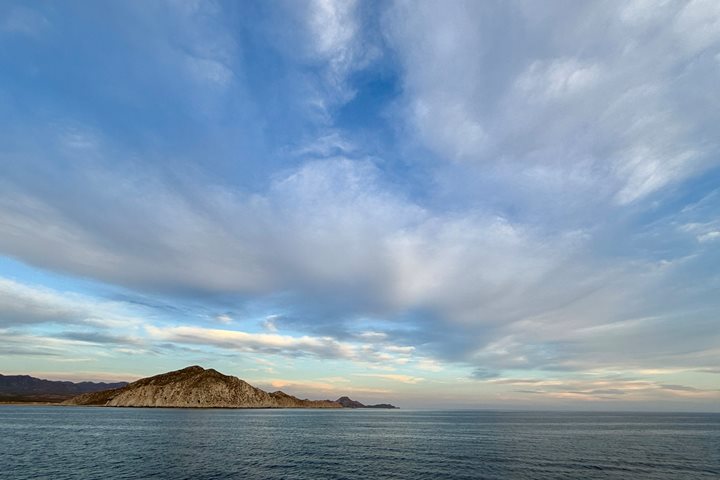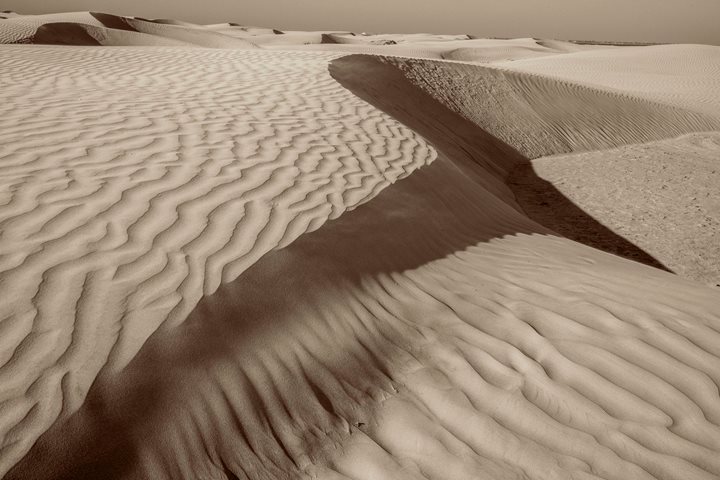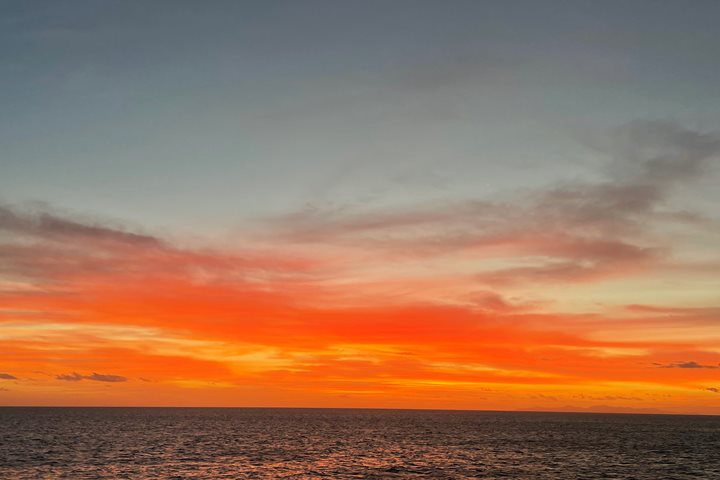For many people on board, this day began extremely early with a gentle announcement not long after midnight to let us know there were again "Northern Lights" visible in the sky, a bit more pronounced than the previous nights.
The next special sighting, of mountain goats, came at a more "normal" early hour, as the ship was beginning its transit of a long scenic fjord called Endicott Arm. Several mountain goats could be seen on the precipitous rock slopes. Thick and fluffy in their creamy-colored winter coats, a mother and kid moved nimbly between small patches of vegetation sprouting from the steep rock walls.
This gentle nudge out of bed proved well worthwhile, as the scenery around us was jaw-droppingly beautiful. Our ship followed a meandering path of mirror-calm water snaking between high mountain slopes, draped with thin waterfalls and wispy lingering clouds. This dramatic fjord led us twenty miles back into the coastal range of mountains to the mighty Dawes Glacier that filled the far end of the fjord with jagged ice. A thick scattering of small icebergs emanating from the glacier eventually slowed our course, and we paused there to drop our fleet of inflatable small boats. Curious harbor seals bobbed in the silty waters nearby as we made our way toward the glacier. With a brilliant sun beating down and glistening off of the teetering bergs, we navigated through tongues of brash ice to reach a final towering view of the immense glacial face. Translucent seracs of blue ice stood like citadels before us, as large chunks of the glacier occasionally tumbled into the sea amid explosive reports. Overhead, jubilant-sounding arctic terns searched for fish with which to entice their prospective mate.
We boarded the ship again for lunch, retracing our course back though the fjord several miles to a side wing of the main fjord, called Ford's Terror. Again, we took to our inflatable fleet to explore this unusual location. Ford's Terror is also a glacially carved fjord, but its entrance is a narrow and shallow cut that eventually widens into an expansive inner bay. When the tide is ebbing, the entrance becomes a rushing torrent. As the tide falls farther, this torrent turns into a river full of frothing rapids; a potential "terror" for boats. So we entered the cut on a flood tide, to view the innumerable waterfalls gracing the towering walls of the inner fjord. Some falls were thick and flush with cascades of melt water, while others floated elegantly earthward in delicate strands of freckled rain.
After returning to the ship, we continued on out of the long fjord. David Stephens treated us to a presentation of "Native Art of the Northwest Coast," including many examples of his own creations. By late afternoon, we reached the broad waters of Stephens Passage, turning once again northward toward the town of Juneau. As the evening sun dipped low into a yellowing sky over the snowy mountains of Admiralty Island to the west, we ended our long day with a “nightcap” of killer whales off the bow.









